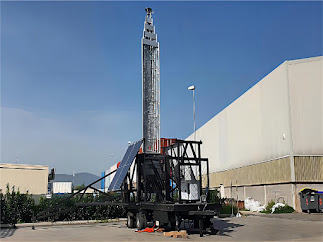Things to Be Attention in Designing Cell on Wheels
Designing a Cell on Wheels (COW) involves several important considerations to ensure its effectiveness and functionality. Here are some key things to pay attention to:
1. Coverage and Capacity: Determine the desired coverage area and the expected number of users. This will help you determine the necessary equipment, such as antennas, radio transceivers, and backhaul connections, to provide adequate coverage and capacity.
2. Antenna Configuration: Select the appropriate antenna configuration to optimize coverage. Consider factors such as antenna gain, beamwidth, and polarization. Directional antennas can be used to focus the signal in specific areas, while omni-directional antennas provide a broader coverage pattern.
3. Power Supply: Ensure a reliable and sufficient power supply for the COW. This may involve using generators, batteries, or a combination of both. Consider the power requirements of all equipment, including the radios, antennas, and other supporting systems.
4. Backhaul Connectivity: Establish a robust backhaul connection to connect the COW to the core network. This can be achieved through various means, such as fiber optic cables, microwave links, or satellite connections. Choose a backhaul solution that offers high capacity and low latency.
5. Structural Stability: Design the COW to be structurally stable and capable of withstanding environmental conditions, such as wind, rain, and temperature variations. Ensure that the structure is securely mounted and anchored to prevent any accidents or damage.
6. Mobility and Transportability: Consider the ease of transporting the COW to different locations. Opt for a design that allows for quick deployment and relocation, such as using a trailer or a compact design that can fit in standard transportation vehicles.
7. Environmental Considerations: Take into account the environmental impact of the COW. Use energy-efficient components and consider the use of renewable energy sources, if possible. Also, ensure proper waste management for any hazardous materials or batteries used.
8. Security and Access Control: Implement security measures to protect the COW from unauthorized access or tampering. This may include physical security measures, such as locks and surveillance cameras, as well as network security protocols to prevent unauthorized access to the equipment.
9. Integration with Existing Infrastructure: Ensure compatibility and seamless integration with existing cellular network infrastructure. Coordinate with the network operator to ensure that the COW can be easily integrated into the network and operate without interference or conflicts.
10. Maintenance and Monitoring: Design the COW with ease of maintenance in mind. Include monitoring and diagnostic tools to facilitate proactive maintenance and troubleshooting. Regularly inspect and maintain the equipment to ensure optimal performance.
Remember to consult with experts in the field, such as telecommunications engineers or network operators, to ensure that your COW design meets industry standards and requirements.



.jpg)
评论
发表评论